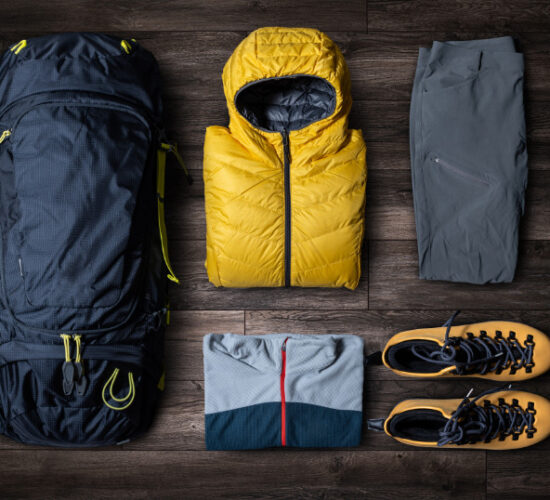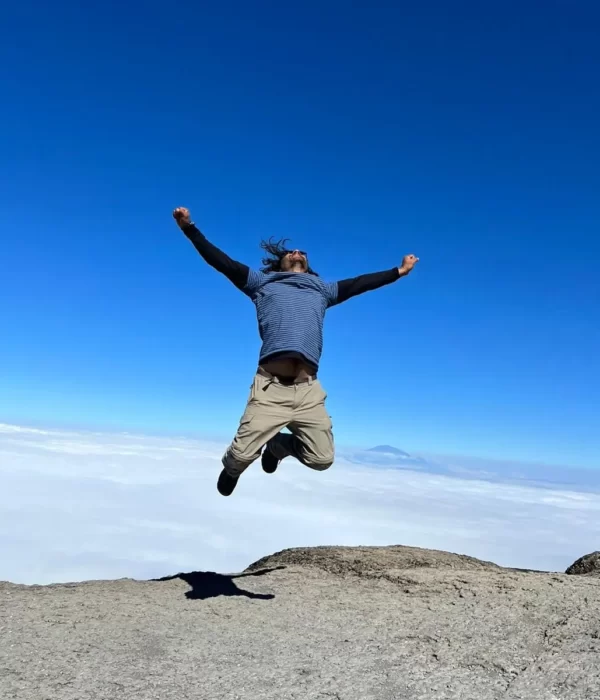Uhuru Peak is the highest of 3 summit points on Kilimanjaro, which include Stella Point, Gillman’s Point and Uhuru Peak. The mountain peak is situated on Kibo’s volcanic cone and is often approached at night from 3 base camps: Barafu Camp, Kibo Hut and Crater Camp. Even though the summit offers breathtaking views of Mawenzi Peak, Mount Meru, Northern Glaciers and other geological features, temperatures in the area can be extreme therefore appropriate clothing for warmth and comfort is advisable.
What To Expect From Uhuru Peak On Kilimanjaro?
- The best months to avoid crowds at the summit are June, July, October, December or February. Months that border the rainy seasons are often less crowded.
- Climbing prices leading up to the summit vary depending on package tier and the number of days traveled. For example, the 5-day Marangu route is significantly cheaper than the 7-day Rongai route, regardless if a full moon package is included.
- Uhuru Peak has a wooden sign, established by the Kilimanjaro National Park, that maps out the area for arriving hikers.
1. Uhuru Peak Height
The summit, Uhuru Peak, sits at a height of nearly 5,895 meters (approximately 19,341 feet) and covers an average hiking length of about 53-72 kilometers (roughly 32-45 miles) from Kilimanjaro’s base.
Kilimanjaro Summit
Climbing Kilimanjaro’s summit height of about 5,895 meters (roughly 19,341 feet) takes approximately 5-9 days on the mountain.
2. Uhuru Peak Coordinates
Uhuru Peak’s coordinates are roughly 3.0666° S, 37.3507° E on Kilimanjaro, which can only be reached by climbing the mountain.
A. Mountain
The mountain, which measures approximately 5,895 meters (roughly 19,341 feet), doesn’t have difficult mountain climbing sections like Mount Everest or other mountain peaks of comparable altitude. It simply requires climbing through thick snow, montane forest and a number of gradual landscapes.
B. Climb
The mountain, which measures approximately 5,895 meters (roughly 19,341 feet), doesn’t have difficult mountain climbing sections like Mount Everest or other mountain peaks of comparable altitude. It simply requires climbing through thick snow, montane forest and a number of gradual landscapes.
3. Uhuru Peak Hike
Hikes up to Uhuru Peak last between 5 to 9 days, cover a distance measurement length of nearly 53-72 kilometers (roughly 32-45 miles) and have an expected difficulty scale of about 1 to 4 climbing grade, according to YDS (Yosemite Decimal System).
A. Distance & Climbing Length
| Hiking Distances | |
| 5-Day Marangu Route | 72 kilometers (45 miles) |
| 6-Day Marangu Route | 72 kilometers (45 miles) |
| 6-Day Umbwe Route | 53 kilometers (32 miles) |
| 7-Day Rongai Route | 81 kilometers (50 miles) |
| 7-Day Machame Route | 62 kilometers (37 miles) |
| 7-Day Lemosho Route | 71 kilometers (43 miles) |
| 8-Day Lemosho Route | 71 kilometers (43 miles) |
| 9-Day Northern Circuit Route | 82 kilometers (50 miles) |
B. Difficulty
| Climbing Routes | Level of Difficulty | Climbing Grades (YDS) |
| 6-Day Umbwe Route | Hardest | Difficulty Grades of 2 & 3 |
| 5-Day Marangu Route | Very Hard | Difficulty Grade of 1 |
| 6-Day Marangu Route | Hard | Difficulty Grade of 1 |
| 6-Day Machame Route | Medium | Difficulty Grades of 1, 2 & 3 |
| 7-Day Machame Route | Medium | Difficulty Grades of 1, 2 & 3 |
| 7-Day Lemosho Route | Medium | Difficulty Grades of 1, 2 & 3 |
| 8-Day Lemosho Route | Easy | Difficulty Grades of 1, 2 & 3 |
| 7-Day Rongai Route | Very Easy | Difficulty Grade of 1 |
| 9-Day Northern Circuit Route | Easiest | Difficulty Grade of 1 |
4. Uhuru Peak Weather
A. Weather Forecast
Since Mount Kilimanjaro has its own weather, conditions at Uhuru Peak can be unpredictable. Weather forecasts on the mountain can be determined by heavy trade winds that blow throughout Moshi town, at least 2-weeks prior to Kilimanjaro departures.
B. Temperature
Summit temperatures on the mountain at Uhuru Peak, which is approximately 5,895 meters (nearly 19,341 feet), can range between -7 to -29 degrees Celsius (roughly 20 and -20 degrees Fahrenheit).
5. Uhuru Peak Eruptions
Uhuru Peak’s volcanic cone, Kibo, last erupted 360,000 years ago, which was caused by subterranean pressure that is a result of a continental shift within the Great Rift Valley.
Mount Kilimanjaro
Mount Kilimanjaro has 3 volcanic cones, Kibo, Mawenzi and Shira, which were formed millions of years ago by volcanic eruptions. In fact, this volcanic activity is a result of the mountain’s 5,895 meter (roughly 19,341 feet) height above sea level, which many climb today.
6. Uhuru Peak Pronunciation
Uhuru Peak is pronounced /ʊˈhuːruː piːk/ in Swahili and English.
Uhuru Meaning
The name Uhuru Peak derives from the Swahili term Uhuru, which means freedom. The term Uhuru Peak is befitting since Kilimanjaro was historically believed to inhabit cold, evil spirits from nearby villages of Kenya and Tanzania.






